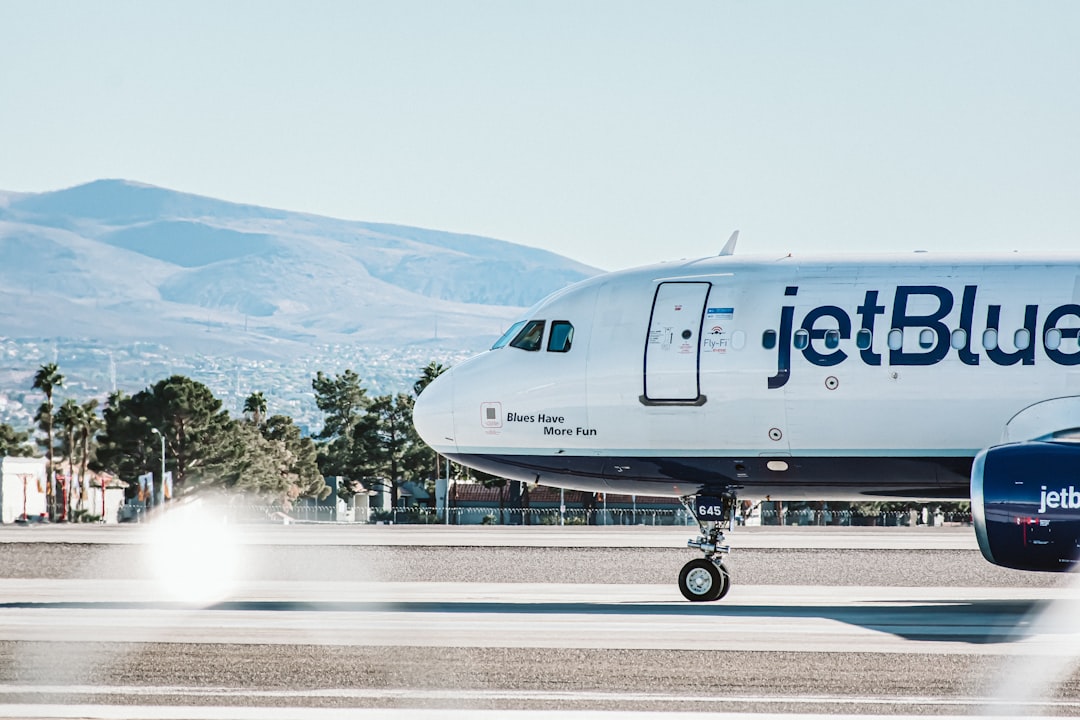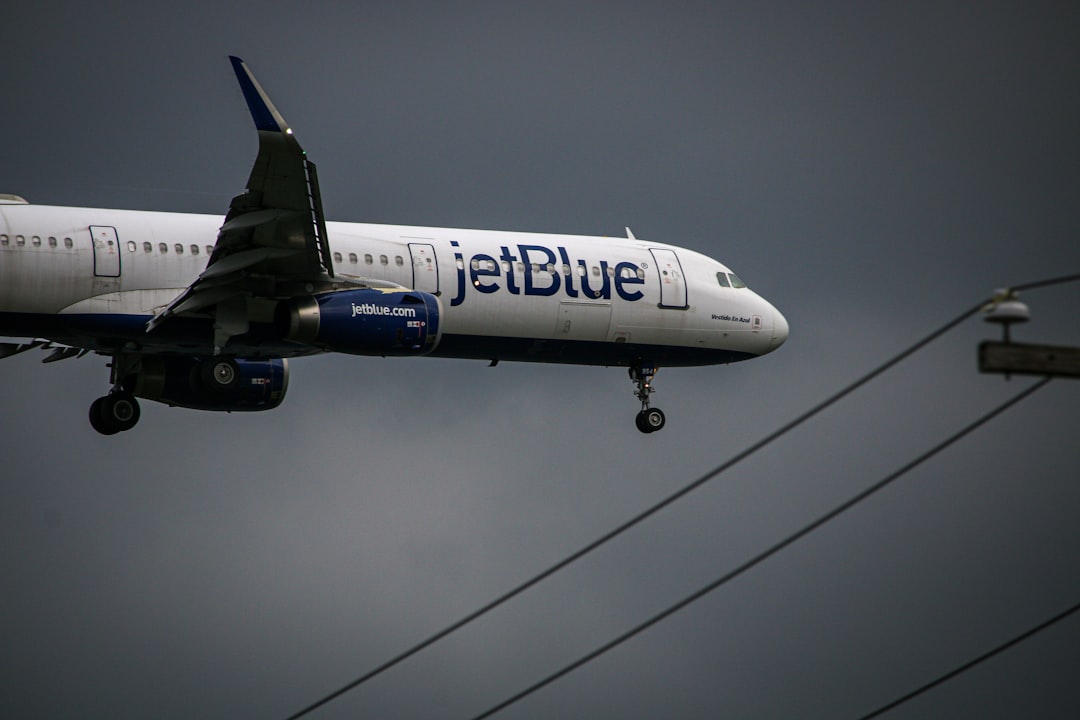Missed Connection: Why JetBlue Let Virgin America Slip Away
Missed Connection: Why JetBlue Let Virgin America Slip Away - A Tale of Two Airlines: Different Business Models
When JetBlue and Virgin America began service in 2000 and 2007 respectively, they seemed to have a lot in common as hip, next-generation airlines. Both focused on offering a superior passenger experience through amenities like in-flight entertainment, mood lighting, and leather seats. But under the hood, the two had markedly different business models that ultimately drove them down divergent paths.
Virgin America targeted high-value business travelers shuttling between coastal cities and built its network around transcontinental flights, catering to premium passengers willing to pay up for luxury service. It flew only Airbus narrowbodies configured with first class cabins. JetBlue, in contrast, followed the low-cost blueprint established by Southwest. It served major cities but also expanded into underserved leisure markets, offering barebones base fares but generating ancillary revenue through add-ons like seat assignments and bags. JetBlue operated a mixed fleet of Airbus narrowbodies and Embraer regional jets.
These models produced different cost structures. Virgin relied more heavily on high yields from its premium flyers. JetBlue drove the lowest unit costs in the industry by maximizing aircraft utilization and outsourcing things like ground handling. The choices flowed from the founders' visions. David Neeleman built JetBlue as a mass-market airline for the common man. Sir Richard Branson conceived of Virgin as a boutique carrier redefining premium air travel.
Missed Connection: Why JetBlue Let Virgin America Slip Away - Virgin's West Coast Focus Didn't Align With JetBlue
Virgin America's route network was concentrated on the West Coast, catering primarily to California's tech-savvy frequent flyers. While it served some major eastern cities like New York and Washington D.C., the bulk of Virgin's flights connected Silicon Valley, Los Angeles, and San Francisco.
This West Coast focus was a key part of Virgin's targeting of premium business travelers willing to pay up for amenities and service on transcon routes. But it didn't align well with JetBlue's route map, which was oriented toward the East Coast and Caribbean.
JetBlue got its start in New York and initially built up most of its presence in the Northeast. It later expanded into leisure destinations like Florida and the islands. But at the time of the Virgin sale, JetBlue had limited service on the West Coast compared to its large operations around New York and Boston.
Acquiring Virgin would have given JetBlue a big foothold in California overnight. But JetBlue likely saw too much overlap on transcontinental routes where the two already competed head-to-head. And it may have been concerned about costs of operating former Virgin hubs like San Francisco International Airport.
Industry experts speculate JetBlue was wary of diluting its brand and business model by absorbing Virgin's West Coast focus and more premium product. As an East Coast discounter, overlaying Virgin's network would have pulled JetBlue in a different strategic direction.
JetBlue also caters to a very different kind of customer compared to the well-heeled road warriors Virgin targeted. Virgin flew revamped Airbus narrowbodies with first class cabins and amenity-laden transcon service. JetBlue's workhorse is the all-coach A320. And it has been successful keeping costs low by avoiding the complication of multiple cabin products.
While some believe JetBlue missed an opportunity to gain scale in California, it's understandable why the mismatch in networks and premium offerings gave them pause. An East Coast airline adding a West Coast arm overnight would have been a massive integration challenge with no guarantee of success.
Missed Connection: Why JetBlue Let Virgin America Slip Away - JetBlue Wary of Diluting Its Brand Identity
JetBlue built its brand on affordability, approachability, and fun. From day one, it marketed itself as a stylish yet down-to-earth airline for the average Joe. Its TV ads famously featured humorous blue-collar characters and witty banter that resonated with the masses. This carefully crafted image was central to JetBlue's success in standing out from competitors as a new kind of low-cost carrier.
Acquiring Virgin America threatened to muddy JetBlue's unique brand identity. While both airlines shared some DNA as hip upstarts shaking up the industry, Virgin had cultivated a more elite and aspirational aura. With its sleek design, mood lighting, and first class cabins, it was unabashedly targeting highly-demanding business travelers rather than JetBlue's family vacationers.
Bringing Virgin's more premium ethos under JetBlue's umbrella risked diluting the everyman image it had worked hard to cultivate. JetBlue feared straying from its core brand as a no-frills discounter to compete on price. Trying to be all things to all customers—a low-fare leader AND a luxury boutique carrier—could ring hollow.
JetBlue also wanted to maintain separation from legacy rivals known for hub-and-spoke networks and multiple classes of service. Its market positioning depended on not confusing customers about what set "the blue airline" apart. Lifting pages from the old-school carrier playbook by acquiring Virgin could make JetBlue seem more complex and corporate, undermining years branding itself as the approachable people's airline.
Additionally, JetBlue knew its loyal customers were very attached to its straight-forward, egalitarian in-flight experience. Its Airbus cabins had never featured the stratified seating of first and business class. All passengers got the same onboard product. Introducing the premium offerings ex-Virgin flyers were accustomed to could alienate JetBlue's core base of leisure travelers.
True to its culture of customer focus, JetBlue was wise to worry about how acquiring Virgin would impact perceptions of its brand. While growing by consolidation, the larger goal was to remain the quirky, customer-centric airline millions had come to love as an alternative to ever-merging behemoths. staying laser-focused on its unique identity was paramount.
Missed Connection: Why JetBlue Let Virgin America Slip Away - Fears That Virgin Wouldn't Mesh Culturally
Missed Connection: Why JetBlue Let Virgin America Slip Away - JetBlue Unwilling to Pay a Premium Price
JetBlue was ultimately unwilling to pay the premium price Alaska Airlines offered for Virgin America. At a proposed valuation of $2.6 billion including debt and aircraft leases, Alaska's offer amounted to over 3 times Virgin's annual revenues. JetBlue balked at the lofty price tag despite serious interest in expanding on the West Coast.
Several factors drove JetBlue's decision to back away from a bidding war it felt would lead to overpaying for Virgin. First, JetBlue wanted to maintain its position as an ultra low-cost carrier. Keeping expenses in check was central to its business model. Splurging on Virgin at a rich multiple of revenues could undermine JetBlue's cost discipline and prevent it from offering base fares below legacy competitors.
Additionally, JetBlue knew it could organically build presence in California and the Pacific Northwest for a fraction of the cost of buying Virgin. While an acquisition would accelerate growth, management was confident JetBlue could sufficiently expand West over time through prudent investment in new routes and aircraft. This approach aligned better with JetBlue's methodical, cost-conscious culture.
Moreover, absorbing a big competitor like Virgin America risked significant integration challenges. Combining workforces, fleets, branding, and operations would be complex and costly. Despite the appeal of Virgin's assets, trying to rapidly meld two very different airlines was daunting. JetBlue felt it could strengthen West Coast footholds incrementally without the headache of integrating Virgin.
Perhaps most importantly, JetBlue saw little strategic need to rush into a mega-deal when its core East Coast markets had plenty of room for organic growth. Buying Virgin would push JetBlue into new territory before fully capitalizing on its dominant slots at airports like JFK. Until New York and Boston opportunities were maximized, overextending into California made little sense.
Missed Connection: Why JetBlue Let Virgin America Slip Away - Alaska Seen as a Better Strategic Fit
Missed Connection: Why JetBlue Let Virgin America Slip Away - Missed Opportunity or Dodged Bullet?
JetBlue declining to acquire Virgin America remains a polarizing “what if?” for industry observers. On one hand, JetBlue passed on gaining critical mass in key West Coast markets that could have turbocharged its growth. But conversely, avoiding a richly priced deal likely saved JetBlue from a calamitous culture clash that would have strained its resources. With the benefit of hindsight, rational arguments exist on both sides of this heated debate.
Many argue JetBlue foolishly let a golden opportunity slip through its fingers. Virgin’s strong California presence would have given JetBlue invaluable leverage against rivals in the world’s fifth largest economy. And with Virgin’s high-revenue premium flyers added to the mix, JetBlue would have commanded even greater pricing power across an expanded network. No question, absorbing Virgin would have vaulted JetBlue into the big leagues as a coast-to-coast force and given it renewed relevance.
But JetBlue’s management team at the time felt the risks far outweighed any potential rewards. And their caution was not without merits. For starters, while Virgin’s West Coast focus held appeal, its route map was still limited compared to Southwest’s vast California footprint. Paying a 30% premium to Alaska may have simply traded one competitive disadvantage for another. And make no mistake, combining two airlines with vastly different business models would have been a headache of epic proportions. JetBlue knew full well that mergers rarely play out as smoothly as pitched by bankers.待
Many industry veterans argue JetBlue ultimately did shareholders a favor by taking a pass. While Virgin’s tech-savvy flier base appeared highly attractive from afar, absorbing its San Francisco and Los Angeles hubs would have saddled JetBlue with extremely high operating costs. And transitioning Virgin’s Airbus narrowbodies to fit JetBlue’s all-coach layout would have required significant expenditures. Simply put, the financial benefits of a merger were far less clear cut behind the curtain.
Missed Connection: Why JetBlue Let Virgin America Slip Away - What the Future Holds for JetBlue
Looking ahead, JetBlue has a momentous opportunity to solidify its position as a leading national carrier able to compete toe-to-toe with legacy airlines and budget upstarts alike. After resisting the urge to overpay for growth via acquisition, JetBlue now seems intent on building up its network through smart organic expansion leveraging its strong financial position.
With new service across the United States, Latin America and Europe planned through 2025, JetBlue aims to significantly broaden its geographic reach while staying true to its low-cost roots. This includes growing relevance in major markets like Los Angeles where it previously lagged rivals. JetBlue is also set to push the boundaries of its successful value carrier model by introducing reimagined onboard products tailored to the needs of leisure and business travelers.
Recent cabin restyling hints at JetBlue's vision of segmenting the passenger experience to capture a greater share of high-yielding corporate accounts. Options like larger seats with privacy dividers cater to road warriors while also appealing to vacationers craving more comfort. This evolution bridges the growing divide between premium and bare-bones economy on legacy competitors, in hopes of attracting both premium leisure flyers and cost-conscious suits.
To support its growth, JetBlue continues investing in next-generation Airbus aircraft offering improved fuel efficiency. New A321LR and XLR jets with extended range will allow nonstop flights deeper into Europe and South America from the eastern U.S. JetBlue also has on order fuel-sipping A220-300s enabling service to new markets. While expanding, JetBlue aims to keep costs low through fleet simplification and high asset utilization.
Technologically, JetBlue is also modernizing systems critical to operational reliability and customer experience. This includes deploying broadband connectivity through Viasat to support streaming across all routes. JetBlue was the first domestic airline to offer free fly-fi WiFi. Upgrading to faster, satellite-powered internet keeps it ahead of competitors here while also enabling innovations like at-seat ordering and self-service rebooking.
Culturally, JetBlue appears reinvigorated under new CEO Robin Hayes to balance growth with sustaining its competitive edge as a customer-focused discounter. By staying disciplined, JetBlue hopes to avoid the integration pitfalls that often derail strategic mergers. If successful, analysts believe JetBlue is poised for ascendancy as an admired consumer brand and industry disruptor.























